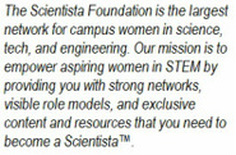|
9/23/2013 1 Comment The Primary Application - MD Vs DOThe Primary Application By Chelsea Travers There are two different types of medical schools in the U.S.: those granting MD (doctor of medicine) degrees and those granting DO (doctor of osteopathic medicine) degrees. The primary applications for MD and DO schools are very similar. Having finished both of them, I will compare and contrast, and then I will also describe the two types of medical schools based on what I have heard and witnessed in my time shadowing and listening to admissions representatives from both perspectives. This past fall, I had a friend come in and speak to the pre-med club about his experience applying to medical school. He had already interviewed at several schools by that point, and he would later be accepted to something like eight medical schools. He put together an entire presentation and included the very helpful visual below.  This figure depicts the significance of each part of the medical school application. As you can see, MCAT and GPA are at the top. These numbers are entered into an algorithm that dictates whether you will get a secondary or not; the baseline is very low, so the majority of applicants get a secondary. Some schools may prescreen you and decide before receiving your completed app (primary with letters of recommendation, secondary and fees) that you are rejected. If this is so, you will receive a rejection email immediately after completing your secondary, but I’m getting ahead of myself. First, I will detail the format of the primary app, which encompasses the boxed subjects in the figure. The AMCAS Primary AMCAS (MD) is minimalistic. There are tabs, which are organized into sections, such as biographical information, transcripts, colleges attended, coursework, work and activities, essays, letters and schools to apply to. The writing-intensive sections are essays and work and activities. I started writing my personal statement on Christmas afternoon; this gave me plenty of time to rewrite most of it and have every PhD and friend I knew read it and give me feedback. Your statement will evolve dramatically, but the end product should display your most professional and accurate motivations for becoming a doctor. For the work and activities section, you will have a maximum of 15 opportunities to briefly explain other aspects of your life that exemplify your motivations, with a choice to expand on three of those experiences. There are many ways to tackle this section, but there are two goals to remember: 1) be consistent and 2) no spelling/grammar errors. The DO Primary When it came to filling out the DO application, I basically copied and pasted my details from my MD app. However, the interface of this app is very different, and—I would say—more user-friendly. There are fewer tabs and more subsections within each tab. The main differences are that the work and experience section is divided into extracurricular and paid, there is a designated space for awards, scholarships, accomplishments, etc., and the personal statement is significantly shorter. To summarize, I have included a Venn diagram. Regarding the institutional differences, traditional medical schools are the longstanding, more publicized schools of thought, often referred to as allopathic. Osteopathic schools began in 1874, inspired by Dr. Andrew Taylor Still’s holistic approach to medicine. The latter has gained prominence in the last decade due to the upcoming shortage concerns and the lower standards of acceptance. The magic words to any medical school are “rural” and “primary care,” and this especially applies to osteopathic intuitions. The bottom line is, if you hope to practice under the primary care/internal medicine umbrella or have a lower GPA/MCAT score, then DO schools may be a good place for you to apply. This article providesinsightful information regarding DO schools. One advantage to considering DO schools is that their graduates may apply to both MD and DO residencies, giving a doctor double the chances of matching. However, if you would like to explore more competitive specialty options, allopathic is the better pathway. Other Helpful Links: · Match: http://futureoffamilymedicine.blogspot.com/2013/03/future-of-family-medicine-2013-match.html · Chance predictor: http://prospectivedoctor.com/chance-predictor · Industry blogger: http://drkevincampbellmd.wordpress.com/ · For researching allopathic schools: MSAR · Your primary source: Student Doctor Network Learn to navigate the forums, they can answer almost any question you have. · DO App and MD App · Thread for MD app activities section: http://forums.studentdoctor.net/showthread.php?t=896983
Chelsea Travers is a biology major and chemistry minor at Pacific Lutheran University in Tacoma, WA. Originally from Las Vegas, she has traveled from the desert to the rain in hopes to get closer to her dream of becoming a doctor. Comments? Leave them below!
1 Comment
10/16/2021 02:09:08 pm
Great article thanks for sharing this great article
Reply
Your comment will be posted after it is approved.
Leave a Reply. |
Education BlogAbout ScientistaSubscribe!NEW!New PostsWhat's HotClick to set custom HTML
You Might Like...
Connect With UsLatest tweets |
The Scientista Foundation, Inc. All Rights Reserved © 2011-2021 | Based in NY | [email protected]
The Network for Pre-Professional Women in Science and Engineering
The Scientista Foundation is a registered 501(c)(3) -- Donate!
The Network for Pre-Professional Women in Science and Engineering
The Scientista Foundation is a registered 501(c)(3) -- Donate!




 RSS Feed
RSS Feed









